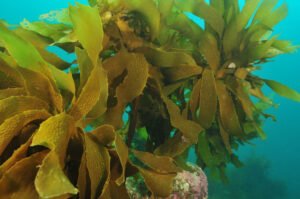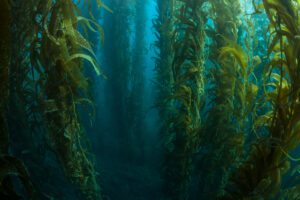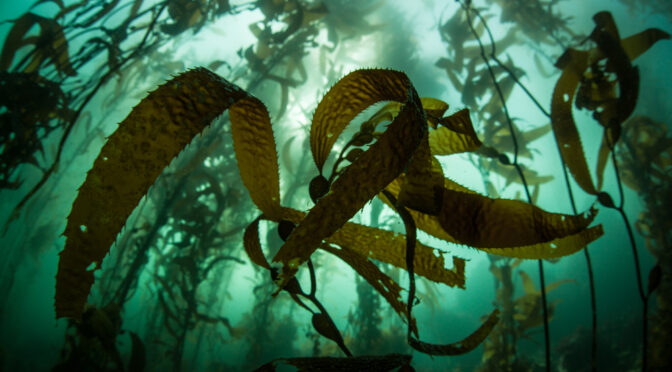Kelp commonly flourishes off the Pacific Coast of North America, fast growing and forming forests beneath the ocean’s surface. It is one of the most important parts of the underwater ecosystem.
Kelp is not a plant.
Kelp is actually a species of algae, more specifically part of the Protista Kingdom.

There are no roots.
This organism actually anchors itself to the sea floor, drawing it’s nutrients from the water.
It uses photosynthesis.
Similarly, kelp uses sun to process the nutrients it consumes like plants.
It prefers nutrient rich areas closer to the shoreline
Rarely growing in waters deeper than 131 feet, it prefers shallow waters with more sunlight.
They may reach lengths of more than 100 feet long.
Once kelp has reached the water’s surface, it keeps growing out, creating floating canopies which keep the environment cool and equally protected.
Kelp grows at an incredible rate.

When in the correct environment, kelp can grow by 18 inches in a single day!
Groups of kelp coexist.
The phrase “kelp forest” arises from their living conditions where they grow quite densely together.
Kelp provides shelter and food for many animals.
Many a variety of fish and marine mammals make their homes in forests. They provide ample shelter from threats and create opportune feeding grounds for various bird species and other aquatic creatures.
With thanks to The Rain Forest Site

